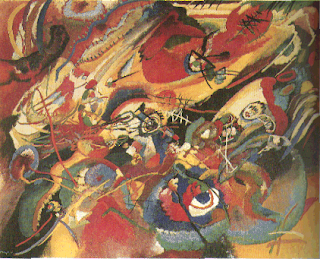Calm is an adjective meaning peaceful, quiet; particularly used of the weather, free from wind or storm, or of the sea, as opposed to rough. The word appears in French calme, through which it came into English, in Spanish, Portuguese and Italian calma. Most authorities follow Diez (Etym. Wörterbuch der romanischen Sprachen) in tracing the origin to the Low Latin cauma, an adaptation of Greek καῦμα, burning heat, καίειν, to burn. The Portuguese calma has this meaning as well as that of quiet. The connection would be heat of the day, rest during that period, so quiet, rest, peacefulness. The insertion of the L, which in English pronunciation disappears, is probably due to the Latin calor, heat, with which the word was associated.
The most common meaning for the word "calm", as described above, is dealing with the weather and wind. There are many things that are absent when the weather is calm. For example, when a sailboat is at rest on the ocean that usually means there's no wind, waves, or current, to push it along. Many times a warm front will bring in a large mass of warm air which helps to move the sailboat along.
Another example would be how there's a long sloped zone in the troposphere, where changes of temperature and wind velocity are large compared to changes outside the zone. Therefore, the passage of a front at a fixed location is marked by sudden changes in temperature and wind and also by rapid variations in other weather elements such as moisture and sky condition. These elements aren't present either when there is a calm. Storms need warm, moist air as fuel, and they typically draw that air in from the surrounding environment. Storms can draw in that air from all directions -- even from the direction in which the storm is traveling.
As the warm, moist air is pulled into a storm system, it leaves a low-pressure vacuum in its wake. The air travels up through the storm cloud and helps to fuel it. The updrafts in the storm, however, quickly carry the air upward, and when it reaches the top of the cloud mass, this warm moist air gets spit out at the top. This air is sent rolling out over the big, anvil-shaped head of the thunderclouds or the roiling arms of hurricanes. From there, the air descends -- drawn back toward lower altitudes by the very vacuum its departure created in the first place. This descending air becomes warmer and drier after its trip through the cloud, which involves cooling and condensation. Warm, dry air is relatively stable, and once it blankets a region, it stabilizes that air in turn. This causes the calm before a storm.
There are many other elements and factors such as cloud cover, plate tectonics, even the earth's rotation, amongst many other things that cause wind or currents that would help to move a sailboat or any other object that may be in the ocean. All of these are non-factors when an object at sea or elsewhere is at rest or calm though.
In Focal Point;
Calmness is the mental state of being free from agitation, excitement, or disturbance. Calmness can most easily occur for the average person during a state of relaxation, but it can also be found during much more alert and aware states. Some people find that focusing the mind on something external, or even internal, such as the breathing, can itself be very calming. Calmness is a quality that can be cultivated and increased with practice. It usually takes a trained mind to stay calm in the face of a great deal of different stimulation, and possible distractions, especially emotional ones. The negative emotions are the greatest challenge to someone who is attempting to cultivate a calm mind. Some disciplines that promote and develop calmness are yoga, relaxation training, breath training, and meditation . Another term usually associated with calmness is "Peace". A mind that is at peace or calm will cause the brain to produce "good" hormones, which in turn give the person a stable emotional state. Seeing the rise in crime and diseases around the world which are more often than not the consequences of the emotions going 'out-of-control', it is therefore considered beneficial for many to stay calm and cultivate it in every possible situation, especially during stressful events such as demise of a family member or failure in business.
Source : http://en.wikipedia.org/wiki/Calmness
http://en.wikipedia.org/wiki/Calmness









































